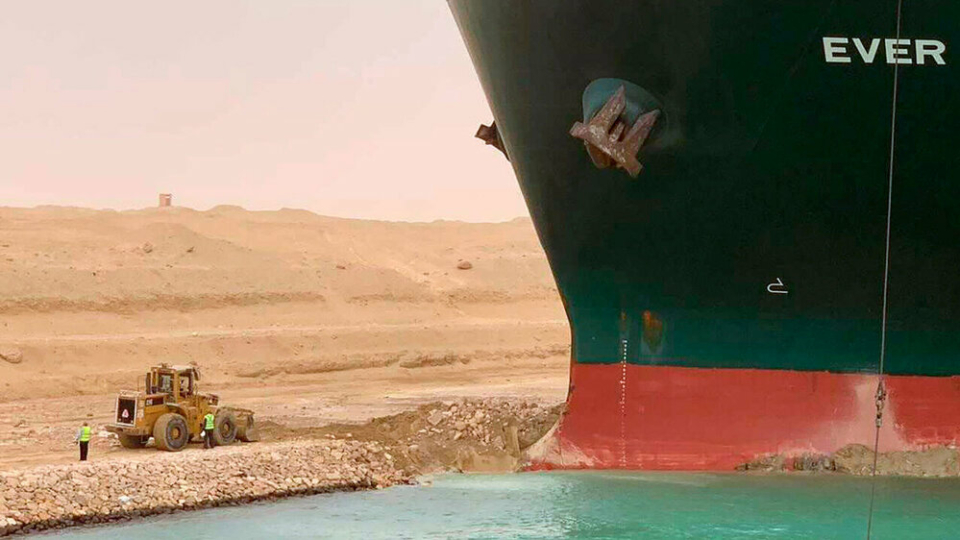Story by
Johnny Mccord
Tags /
- Business
- Ever Given
- Risk

The Ever Given: It’s delivering one massive gut punch after another.
Now, to the international press, the dramatic story has reached its happy conclusion: The canal has been reopened, the backlog of canal transits has been made up, and the ripple effects of supply chain disruption simply aren’t newsworthy enough to warrant column inches.
For the individual cargo interests on board the Ever Given, however, the story is far from over.
And, deluged by this continuous stream of shockingly bad news within the industry, unaffected cargo owners are scrambling to gain a better understanding of their true risk before they find themselves on the receiving end of disaster.
To be sure, the evolving situation in the Suez Canal is a lot to take in. And, while the scale of the losses won’t be fully understood for months, the Ever Given offers some critical lessons to the supply chain industry right now.
You’ve certainly heard that shipowner, Shoei Kisen Kaisha, has declared General Average. Meaning, cargo owners will share in four-fifths of the losses—losses which currently include a claim of $916,000,000 for lost revenue, salvage costs, and damage to reputation and infrastructure, courtesy of the Suez Canal Authority.
Now, what you may not realize is that cargo owners who shipped under and uninsured containers have just been hit with a double whammy. Not only do they have to put up the cash counter guarantees demanded by the shipowner—bonds that would otherwise have been covered by their insurers—but their cargo is still stuck on that ship, and very well could be for the next 12 months.
And, this lack of insurance is a pervasive problem. Today, 85–90% of containers are moved without adequate coverage, exposing businesses to massive liability.
How will the Ever Given situation resolve?
It’s too early to tell. Right now, we’re watching an expensive game of chicken play out—with each party hoping the other blinks first.
Unfortunately, it’s hard to see the Suez Canal Authority backing down from its original demand or releasing the ship and its cargo, which strengthens its bargaining position.
And, even if the innocent cargo interests could be released, the logistics of discharging a 20,000 TEU ship are simply prohibitive—neither the Suez Port nor Port Said has the infrastructure necessary to discharge the Ever Given.
Meanwhile, ship and cargo interests will argue the canal’s revenue was largely not lost but rather delayed—and that the actual canal repair and salvage costs are not remotely equivalent to the canal’s demands. What’s more, the damages claimed by the Authority far exceed the value of the venture. Why would they ever agree to such demands?
So, now, the Ever Given floats idly in the Great Bitter Lake, midway through the Suez Canal—and the finger-pointing has only just begun. And, until an agreement with the Suez Canal Authority has been completed, the vessel and all of its cargo will be detained.
When you think about it, even simply determining how to apportion the losses will prove a massive headache.
Consider this: The Ever Given had 20,000 containers on board. In theory, that means 20,000 unique cargo owners—even more, if the vessel was carrying consolidated containers.
Now, the shipowner, Shoei Kisen Kaisha, must get an average bond, an average guarantee, a bill of lading, and the basis of valuation from every cargo owner. If it takes an hour, on average, to pull those documents together, you’re looking at 20,000 labor hours—just for the guarantees.
In the end, if negligence is proved, cargo owners who’ve incurred a loss will have a claim against the shipowner. (That said, the vessel is responsible for damage to the canal regardless of provable negligence.)
However—and this is important—the shipowner will not have insurance to cover third-party business interruption issues. If the grounding was outside the crew’s control, cargo owners will have no claim whatsoever.
The sometimes unrecognized value of cargo insurance
I understand why it’s so easy to see insurance as a cost. 95–98% of transits run without a loss, after all. What cargo owners often experience is money going out and not a lot of value coming in.
It’s when situations like this occur, however, that the value of insurance becomes abundantly clear.
As marine insurance expert, Peter Townsend said at our last Third Thursday Icebreaker session, “Don’t think of insurance as a cost—think of it as a balance sheet stabilizer. It’s a cost that you’re paying, but when things do go wrong, they don’t go wrong for you.”
It’s why I always advise that you ship your loads with full cargo coverage to ensure your business continuity.
Have questions? Connect with me on LinkedIn and let’s chat.